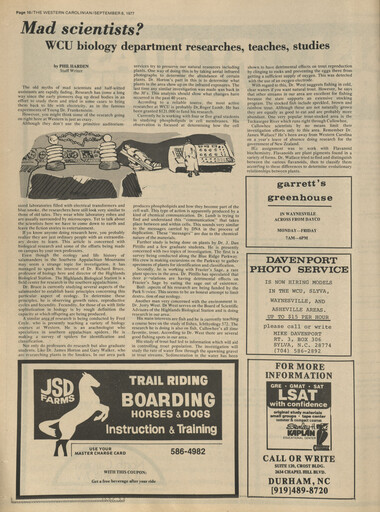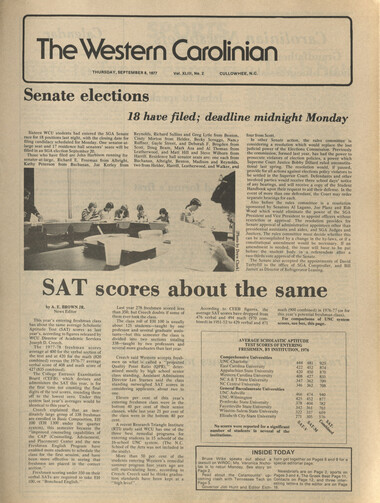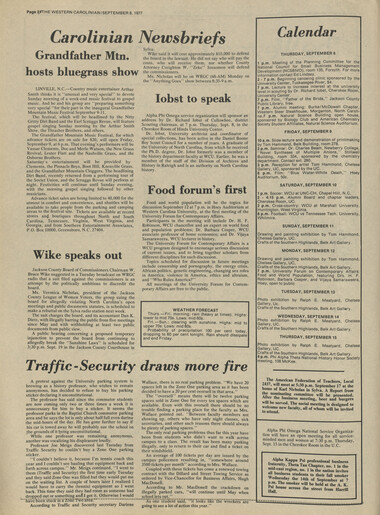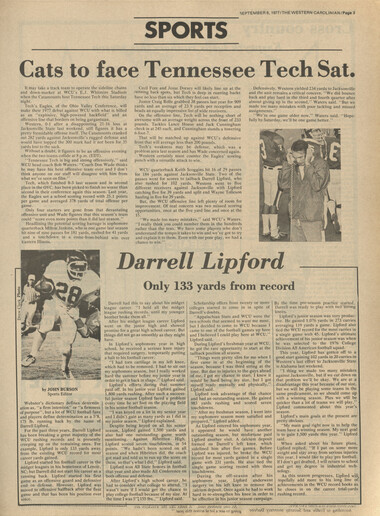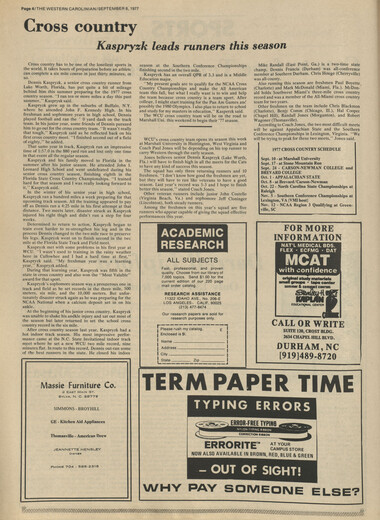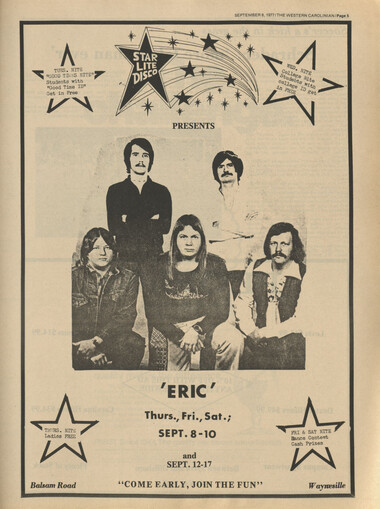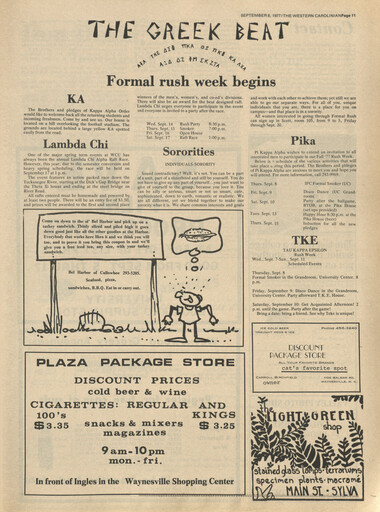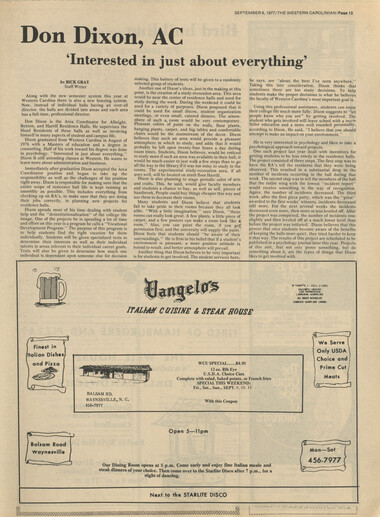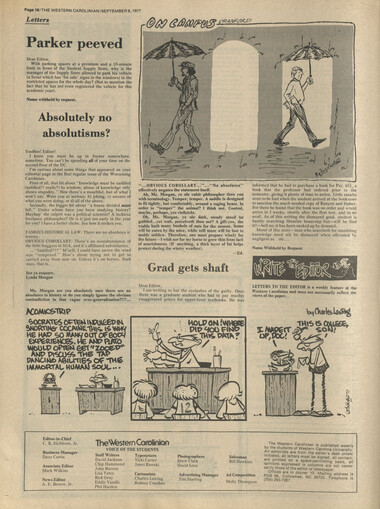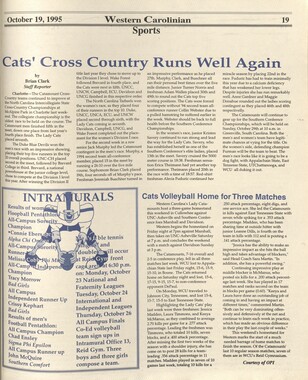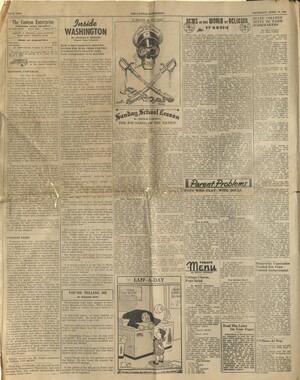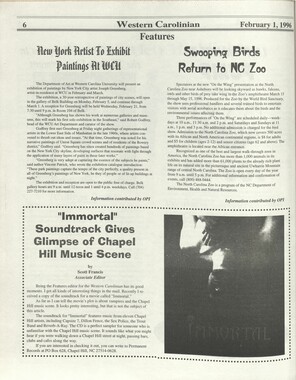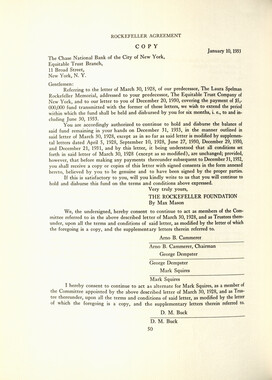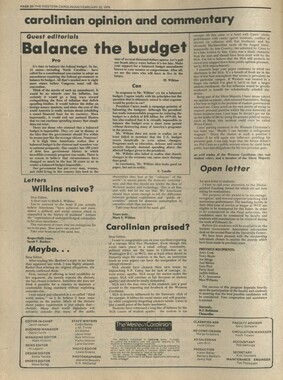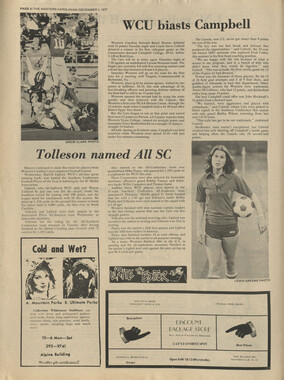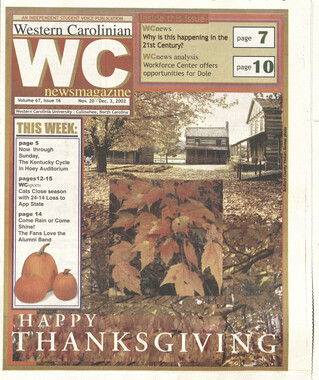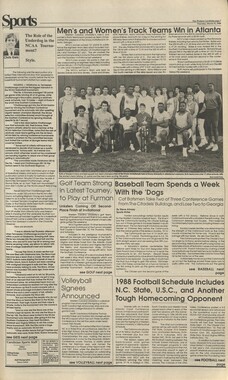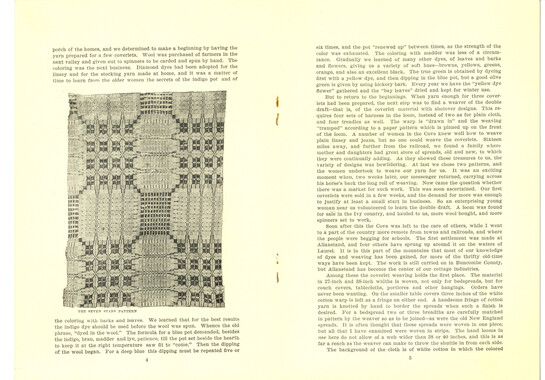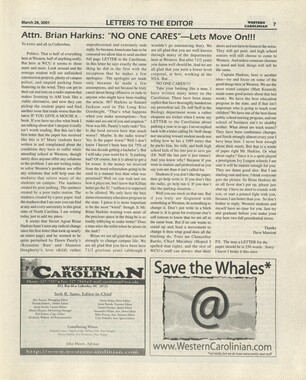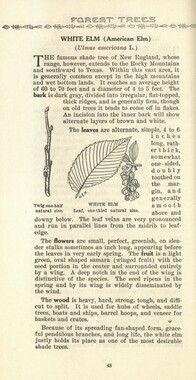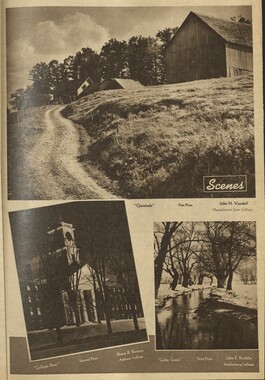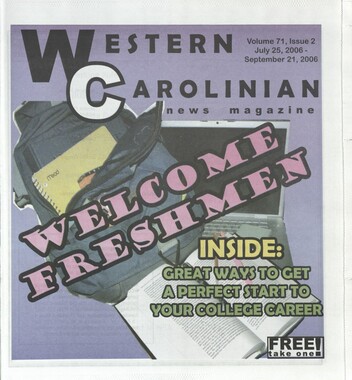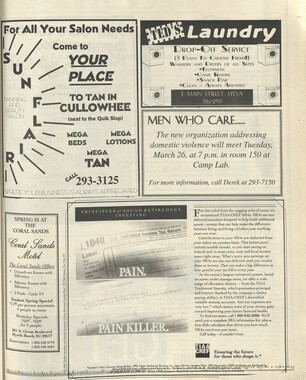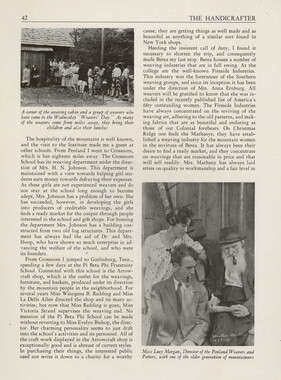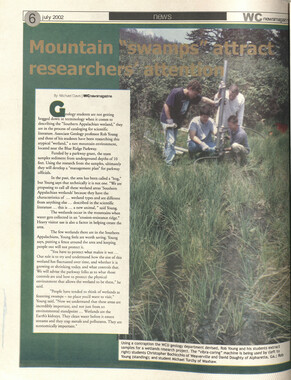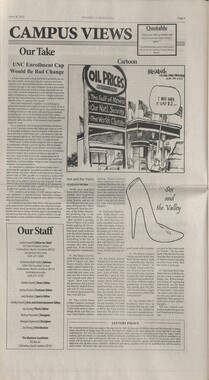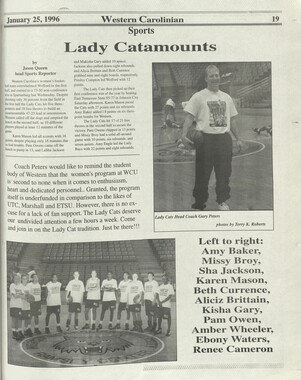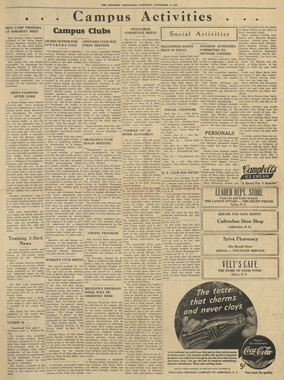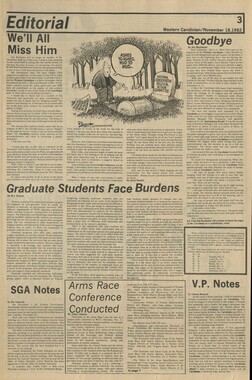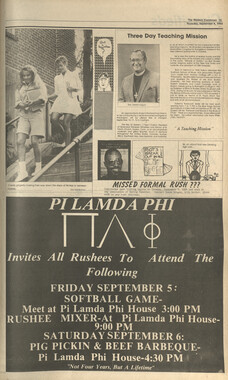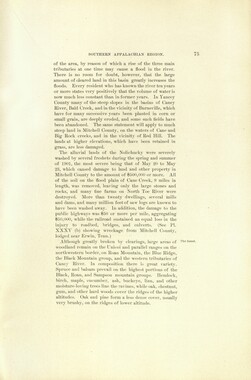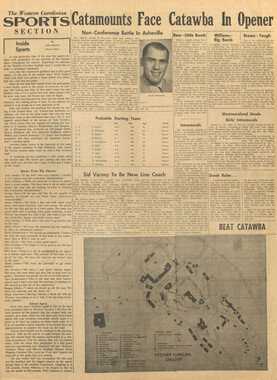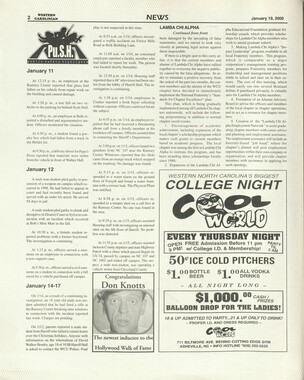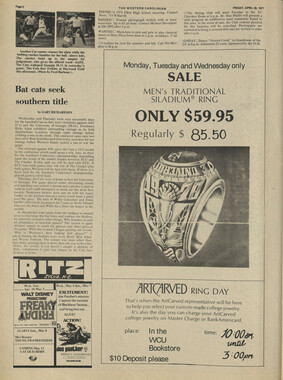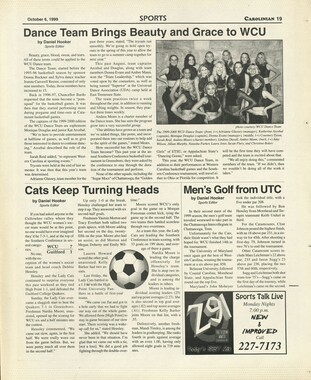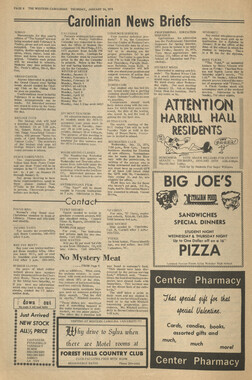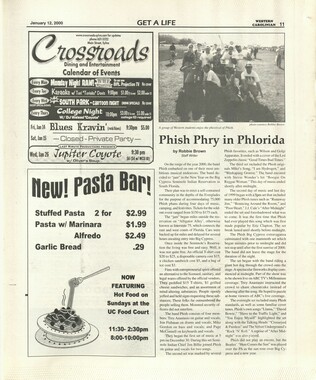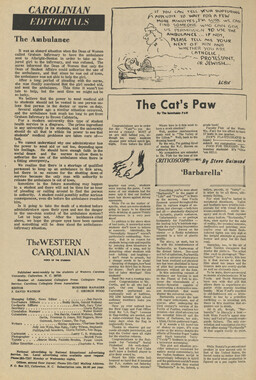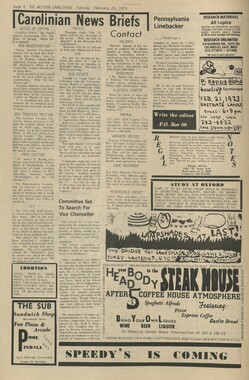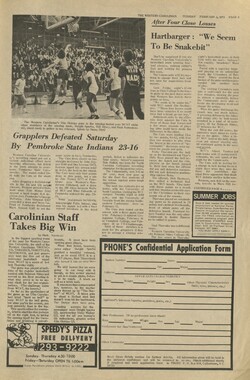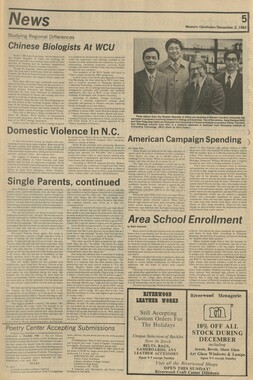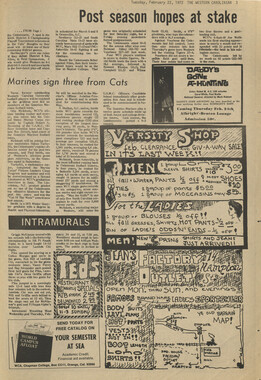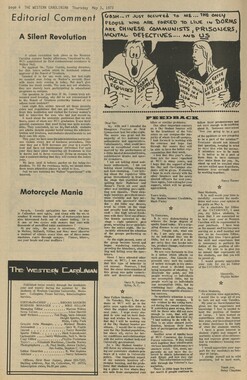Western Carolina University (21)
View all
- Canton Champion Fibre Company (2308)
- Cherokee Traditions (291)
- Civil War in Southern Appalachia (165)
- Craft Revival (1942)
- George Masa Collection (137)
- Great Smoky Mountains - A Park for America (3182)
- Highlights from Western Carolina University (422)
- Horace Kephart (998)
- Journeys Through Jackson (159)
- LGBTQIA+ Archive of Jackson County (90)
- Oral Histories of Western North Carolina (318)
- Picturing Appalachia (6617)
- Stories of Mountain Folk (413)
- Travel Western North Carolina (153)
- Western Carolina University Fine Art Museum Vitreograph Collection (129)
- Western Carolina University Herbarium (92)
- Western Carolina University: Making Memories (738)
- Western Carolina University Publications (2491)
- Western Carolina University Restricted Electronic Theses and Dissertations (146)
- Western North Carolina Regional Maps (71)
- World War II in Southern Appalachia (131)
University of North Carolina Asheville (6)
View all
- Allanstand Cottage Industries (62)
- Appalachian National Park Association (53)
- Bennett, Kelly, 1890-1974 (1463)
- Berry, Walter (76)
- Brasstown Carvers (40)
- Carver, George Washington, 1864?-1943 (26)
- Cathey, Joseph, 1803-1874 (1)
- Champion Fibre Company (233)
- Champion Paper and Fibre Company (297)
- Cherokee Indian Fair Association (16)
- Cherokee Language Program (22)
- Crowe, Amanda (40)
- Edmonston, Thomas Benton, 1842-1907 (7)
- Ensley, A. L. (Abraham Lincoln), 1865-1948 (275)
- Fromer, Irving Rhodes, 1913-1994 (70)
- George Butz (BFS 1907) (46)
- Goodrich, Frances Louisa (120)
- Grant, George Alexander, 1891-1964 (96)
- Heard, Marian Gladys (60)
- Kephart, Calvin, 1883-1969 (15)
- Kephart, Horace, 1862-1931 (313)
- Kephart, Laura, 1862-1954 (91)
- Laney, Gideon Thomas, 1889-1976 (439)
- Masa, George, 1881-1933 (61)
- McElhinney, William Julian, 1896-1953 (44)
- Niggli, Josephina, 1910-1983 (10)
- North Carolina Park Commission (105)
- Osborne, Kezia Stradley (9)
- Owens, Samuel Robert, 1918-1995 (11)
- Penland Weavers and Potters (36)
- Roberts, Vivienne (15)
- Roth, Albert, 1890-1974 (142)
- Schenck, Carl Alwin, 1868-1955 (1)
- Sherrill's Photography Studio (2565)
- Southern Highland Handicraft Guild (127)
- Southern Highlanders, Inc. (71)
- Stalcup, Jesse Bryson (46)
- Stearns, I. K. (213)
- Thompson, James Edward, 1880-1976 (226)
- United States. Indian Arts and Crafts Board (130)
- USFS (683)
- Vance, Zebulon Baird, 1830-1894 (1)
- Weaver, Zebulon, 1872-1948 (58)
- Western Carolina College (230)
- Western Carolina Teachers College (282)
- Western Carolina University (2008)
- Western Carolina University. Mountain Heritage Center (18)
- Whitman, Walt, 1819-1892 (10)
- Wilburn, Hiram Coleman, 1880-1967 (73)
- Williams, Isadora (3)
- Cain, Doreyl Ammons (0)
- Crittenden, Lorraine (0)
- Rhodes, Judy (0)
- Smith, Edward Clark (0)
- Appalachian Region, Southern (3032)
- Asheville (N.C.) (1945)
- Avery County (N.C.) (26)
- Blount County (Tenn.) (200)
- Buncombe County (N.C.) (1680)
- Cherokee County (N.C.) (283)
- Clay County (N.C.) (556)
- Graham County (N.C.) (247)
- Great Smoky Mountains National Park (N.C. and Tenn.) (535)
- Haywood County (N.C.) (3573)
- Henderson County (N.C.) (70)
- Jackson County (N.C.) (4926)
- Knox County (Tenn.) (61)
- Knoxville (Tenn.) (21)
- Lake Santeetlah (N.C.) (14)
- Macon County (N.C.) (421)
- Madison County (N.C.) (216)
- McDowell County (N.C.) (39)
- Mitchell County (N.C.) (135)
- Polk County (N.C.) (35)
- Qualla Boundary (982)
- Rutherford County (N.C.) (78)
- Swain County (N.C.) (2187)
- Transylvania County (N.C.) (270)
- Watauga County (N.C.) (12)
- Waynesville (N.C.) (86)
- Yancey County (N.C.) (72)
- Aerial Photographs (3)
- Aerial Views (60)
- Albums (books) (4)
- Articles (1)
- Artifacts (object Genre) (228)
- Bibliographies (1)
- Biography (general Genre) (2)
- Cards (information Artifacts) (38)
- Clippings (information Artifacts) (193)
- Copybooks (instructional Materials) (3)
- Crafts (art Genres) (622)
- Depictions (visual Works) (21)
- Design Drawings (1)
- Digital Moving Image Formats (2)
- Drawings (visual Works) (185)
- Envelopes (115)
- Exhibitions (events) (1)
- Facsimiles (reproductions) (1)
- Fiction (general Genre) (4)
- Financial Records (12)
- Fliers (printed Matter) (67)
- Glass Plate Negatives (381)
- Guidebooks (2)
- Internegatives (10)
- Interviews (823)
- Land Surveys (102)
- Letters (correspondence) (1070)
- Manuscripts (documents) (618)
- Maps (documents) (177)
- Memorandums (25)
- Minutes (administrative Records) (59)
- Negatives (photographs) (6192)
- Newsletters (1290)
- Newspapers (2)
- Notebooks (8)
- Occupation Currency (1)
- Paintings (visual Works) (1)
- Pen And Ink Drawings (1)
- Periodicals (194)
- Personal Narratives (10)
- Photographs (12977)
- Plans (maps) (1)
- Poetry (6)
- Portraits (4573)
- Postcards (329)
- Programs (documents) (181)
- Publications (documents) (2444)
- Questionnaires (65)
- Relief Prints (26)
- Sayings (literary Genre) (1)
- Scrapbooks (282)
- Sheet Music (2)
- Slides (photographs) (402)
- Songs (musical Compositions) (2)
- Sound Recordings (802)
- Specimens (92)
- Speeches (documents) (18)
- Tintypes (photographs) (8)
- Transcripts (329)
- Text Messages (0)
- A.L. Ensley Collection (275)
- Appalachian Industrial School Records (7)
- Appalachian National Park Association Records (336)
- Axley-Meroney Collection (2)
- Bayard Wootten Photograph Collection (20)
- Bethel Rural Community Organization Collection (7)
- Blumer Collection (5)
- C.W. Slagle Collection (20)
- Canton Area Historical Museum (2110)
- Carlos C. Campbell Collection (564)
- Cataloochee History Project (64)
- Cherokee Studies Collection (4)
- Daisy Dame Photograph Album (5)
- Daniel Boone VI Collection (1)
- Doris Ulmann Photograph Collection (112)
- Elizabeth H. Lasley Collection (1)
- Elizabeth Woolworth Szold Fleharty Collection (4)
- Frank Fry Collection (95)
- George Masa Collection (173)
- Gideon Laney Collection (452)
- Hazel Scarborough Collection (2)
- Hiram C. Wilburn Papers (28)
- Historic Photographs Collection (236)
- Horace Kephart Collection (861)
- Humbard Collection (33)
- Hunter and Weaver Families Collection (1)
- I. D. Blumenthal Collection (4)
- Isadora Williams Collection (4)
- Jesse Bryson Stalcup Collection (47)
- Jim Thompson Collection (224)
- John B. Battle Collection (7)
- John C. Campbell Folk School Records (80)
- John Parris Collection (6)
- Judaculla Rock project (2)
- Kelly Bennett Collection (1482)
- Love Family Papers (11)
- Major Wiley Parris Civil War Letters (3)
- Map Collection (12)
- McFee-Misemer Civil War Letters (34)
- Mountain Heritage Center Collection (4)
- Norburn - Robertson - Thomson Families Collection (44)
- Pauline Hood Collection (7)
- Pre-Guild Collection (2)
- Qualla Arts and Crafts Mutual Collection (12)
- R.A. Romanes Collection (681)
- Rosser H. Taylor Collection (1)
- Samuel Robert Owens Collection (94)
- Sara Madison Collection (144)
- Sherrill Studio Photo Collection (2558)
- Smoky Mountains Hiking Club Collection (616)
- Stories of Mountain Folk - Radio Programs (374)
- The Reporter, Western Carolina University (510)
- Venoy and Elizabeth Reed Collection (16)
- WCU Gender and Sexuality Oral History Project (36)
- WCU Mountain Heritage Center Oral Histories (25)
- WCU Oral History Collection - Mountain People, Mountain Lives (71)
- WCU Students Newspapers Collection (1923)
- Western North Carolina Tomorrow Black Oral History Project (69)
- William Williams Stringfield Collection (2)
- Zebulon Weaver Collection (109)
- African Americans (390)
- Appalachian Trail (35)
- Artisans (521)
- Cherokee art (84)
- Cherokee artists -- North Carolina (10)
- Cherokee language (21)
- Cherokee pottery (101)
- Cherokee women (208)
- Church buildings (190)
- Civilian Conservation Corps (U.S.) (114)
- College student newspapers and periodicals (2012)
- Dams (115)
- Dance (1023)
- Education (222)
- Floods (63)
- Folk music (1015)
- Forced removal, 1813-1903 (2)
- Forest conservation (220)
- Forests and forestry (1198)
- Gender nonconformity (4)
- Great Smoky Mountains National Park (N.C. and Tenn.) (181)
- Hunting (47)
- Landscape photography (25)
- Logging (122)
- Maps (83)
- Mines and mineral resources (9)
- North Carolina -- Maps (18)
- Paper industry (38)
- Postcards (255)
- Pottery (135)
- Railroad trains (72)
- Rural electrification -- North Carolina, Western (3)
- School integration -- Southern States (2)
- Segregation -- North Carolina, Western (5)
- Slavery (5)
- Sports (452)
- Storytelling (243)
- Waterfalls -- Great Smoky Mountains (N.C. and Tenn.) (66)
- Weaving -- Appalachian Region, Southern (280)
- Wood-carving -- Appalachian Region, Southern (328)
- World War, 1939-1945 (174)
Western Carolinian Volume 43 Number 02
Item
Item’s are ‘child’ level descriptions to ‘parent’ objects, (e.g. one page of a whole book).
-
-
Page 10/THE WESTERN CAROLINIAN/SEPTEMBER 8, 1977 Mad scientists? WCU biology department researches, teaches, studies The old myths of mad scientists and half-witted assistants are rapidly fading. Research has come a long way since the early pioneers dug up dead bodies in an effort to study them and tried in some cases to bring them back to life with electricity, as in the famous experiments of Young Dr. Frankenstein. However, you might think some of the research going on right here at Western is just as crazy. Although they don't use the primitive auditorium- s try to preserve our natural resources including plants. One way of doing this is by taking aerial infrared photographs to determine the abundance of certain plants. Dr. Horton's part in this is to determine what plants in the area show up on the infrared exposures. The last time any similar investigation was made was back in the 30's. This analysis should show what changes have occurred in the past 40 years. According to a reliable source, the most active researcher at WCU is probably Dr.Roger Lumb. He has been granted $121,000 to fund his research. Currently he is working with four or five grad students in studying phospholipids in cell membranes. His observation is focused at determining how the cell sized laboratories filled with electrical transformers and blue smoke, the researchers here still look very similar to those of old tales. They wear white laboratory robes and are usually surrounded by microscopes. Yet to talk about the scientists here we have to come down to earth and leave the fiction stories to entertainment. If yu know anyone doing research here, you probably realize they are just ordinary people with an extraordinary desire to learn. This article is concerned with biological research and some of the efforts being made on campus by your own professors. Even though the ecology and life history of salamanders in the Southern Appalachian Mountains may seem a strange topic for investigation, it has managed to spark the interest of Dr. Richard Bruce, professor of biology here and director of the Highlands Biological Station. The Highlands Biological Station is a field center for research in the southern appalachians. Dr. Bruce is currently studying several aspects of the salamander to establish basic principles concerning this particular aspect of ecology. To determine these principles, he is observing growth rates, reproductive cycles and fecundity. Fecundity, for those of us with little sophistication in biology is by rough definition the capacity at which offspring are being produced. A similar area_of research is being conducted by Fred Coyle, who is presently teaching a variety of biology courses at Western. He is an arachnologist who specializes in southern appalachian spiders. He is making a survey of spiders for identification and classification. Not only do professors do research but also graduate students. Like Dr. James Horton and Gary Walker, who are researching plants in the Smokies. In our area park produces phospholipids and how they become part of the cell wall. This type of action is apparently produced by a kind of chemical communication. Dr. Lumb is trying to find and understand this "communication" that takes place between and within cells. This sounds very similar to the messages carried by DNA in the process of duplication. These "messages" are due to the chemical nature of the materials. Further study is being done on plants by Dr. J. Dan Pittillo and a few graduate students. He is presently concerned with two topics of investigation. The first is a survey being conducted along the Blue Ridge Parkway. His crew is making excursions on the Parkway to gather specimens of plants for identification and classification. Secondly, he is working with Frazier's Sage, a rare plant species in the area. Dr. Pittillo has speculated that deer p—^ulations are having detrimental effects on Frazier's Sage by eating the sage out of existence. Both aspects of his research are being funded by the Park Service. This seems to be an honest attempt to limit destruction of our ecology. Another man very concerned with the environment is Dr. Jerry West. Dr West serves on the Board of Scientific Advisors of the Highlands Biological Station and is doing research in our area. His main interests are fish and he is currently teaching a course here on the study of fishes, Ichthyology 572. The research he is doing is also on fish, Cullowhee's all time favorite, trout. According to Dr. West there are several good fishing spots in our area. His study of trout had led to information which will aid in controlling trout population. The investigation will study the rate of water flow through the spawning gravel in trout streams. Sedimentation in the water has been TRAIL RIDING BOARDING HORSES & DOGS Instruction & Training 586-4982 WITH THIS COUPON: Get a free beverage after your ride shown to have detrimental effects on trout reproduction by clinging to rocks and preventing the eggs there from getting a sufficient supply of oxygen. This was detected with the use of an oxygen electrode. With regard to this, Dr. West suggests fishing in cold, clear waters if you want natural trout. However, he says that other streams in our area are excellent for fishing because the state supports an extensive stocking program. The stocked fish include speckled, brown and rainbow trout. Although these are not naturally grown they are equally as good to eat and are probably more abundant. One very popular trout-stocked area is the Tuckasegee River which runs right through Cullowhee. Cullowhee scientists by no means limit their investigation efforts only to this area. Remember Dr. James Wallace? He's been away from Western Carolina on a year's leave of absence doing research for the government of New Zealand. H'.s assignment was to work with Flavanoid biochemistry. Flavanoids are plant pigments found in a variety of forms. Dr. Wallace tried to find and distinguish between the various flavanoids, then to classify them according to these differences to determine evolutionary relationships between plants. garrett's greenhouse IN WAYNESVILLE ACROSS FROM DAYCO MONDAY—FRIDAY 7AM—6PM DAVENPORT PHOTO SERVICE IS NOW HIRING MODELS IN THE WCU, SLYVA, WAYNESVILLE, AND ASHEVILLE AREAS. UP TO $15 PER HOUR please call or write MIKE DAVENPORT RT. 3, BOX 306 SYLVA, N.C. 28774 (704) 586-2892 FOR MORE INFORMATION GRE • GMAT • SAT LSAT with confidence original study materials small groups • tape cent* summer & compact courses I CALL OR WRITE SUITE 120, CROST BLDG. 2634 CHAPEL HILL BLVD. DURHAM, NC [919]489-8720
Object
Object’s are ‘parent’ level descriptions to ‘children’ items, (e.g. a book with pages).
-
The Western Carolinian is Western Carolina University’s student-run newspaper. The paper was published as the Cullowhee Yodel from 1924 to 1931 before changing its name to The Western Carolinian in 1933.
-
